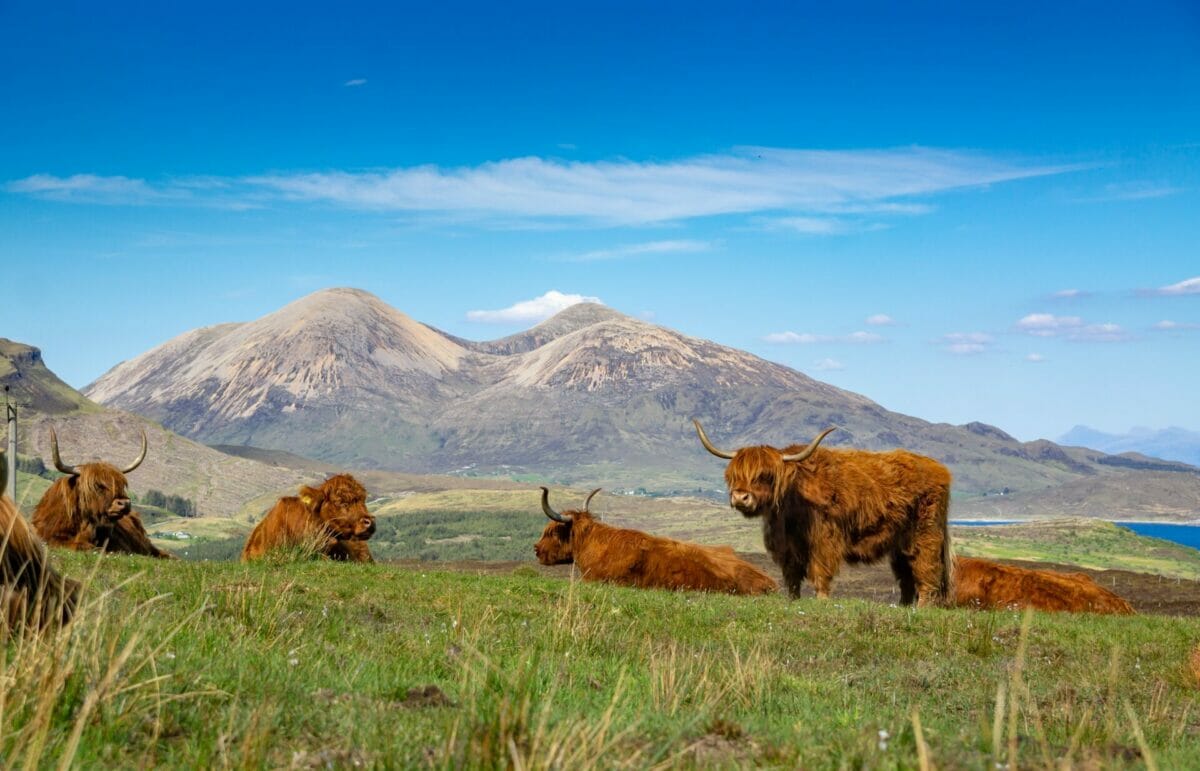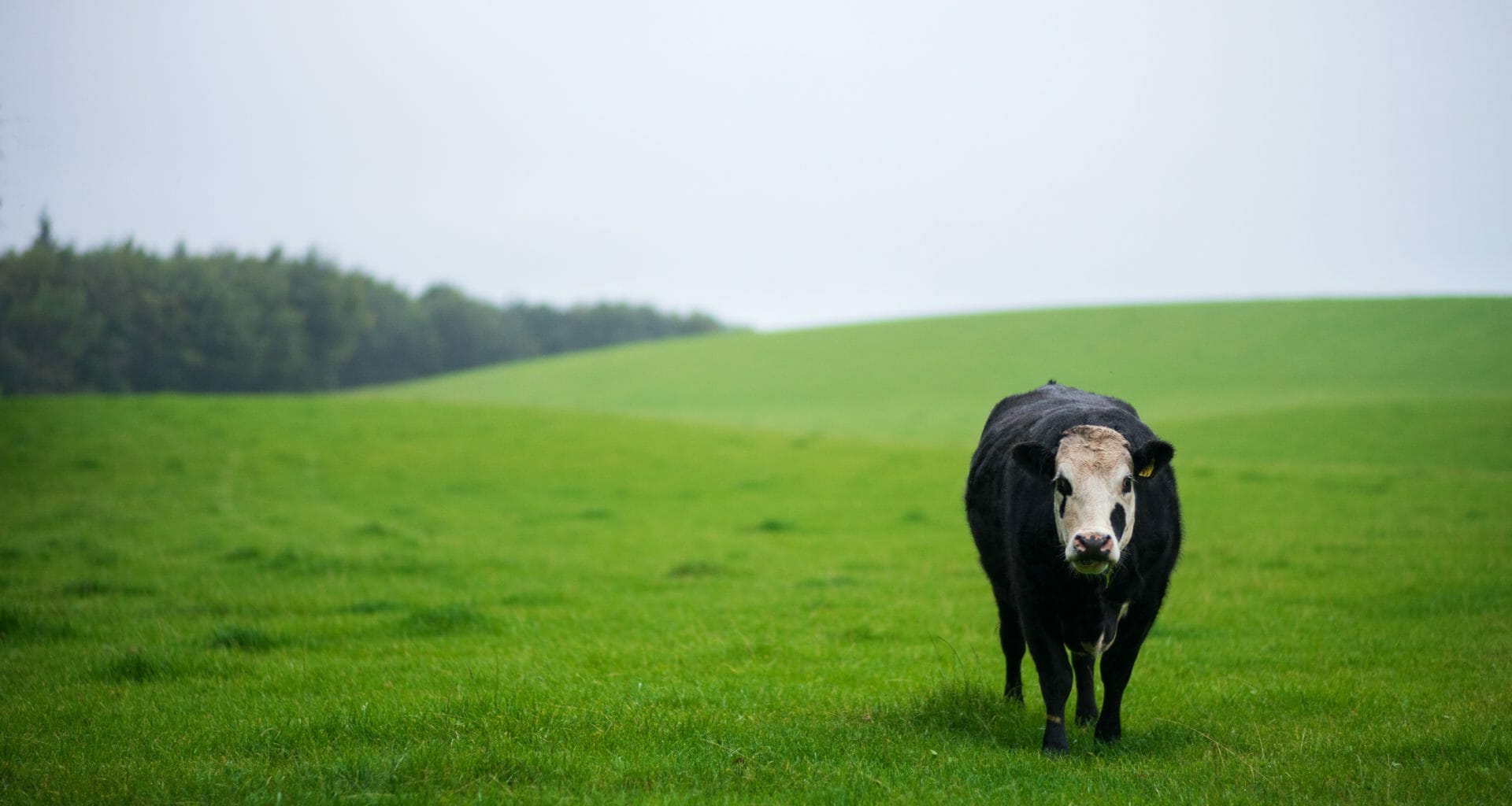Industrial emissions of ammonia – a pollutant which damages ecosystems and threatens human health – increased by more than ten per cent in Scotland last year, new data has revealed.
Over 11 thousand tonnes of ammonia were released into Scotland’s air and water in 2021 – one thousand tonnes more than in 2020. This is part of a longer term trend which has seen reported ammonia emissions from industry increase by over 50 per cent since 2017.
When ammonia is released into the air as a gas it can mix with industrial and car fumes to create a form of air pollution linked to respiratory problems, heart disease, and mental decline.
One health expert told The Ferret that “every effort must be made to control” ammonia emissions for the “sake of our health, our children’s health, and the health of our elderly”.
It has been estimated that thousands of deaths could be avoided in the UK each year if ammonia emissions from farms – the biggest producer of the pollution – were halved.
Green groups also warned that ammonia was causing “significant harm to Scotland’s most important natural habitats” and added this was leading to the loss of some important species.
Ammonia and other excess nitrogen in the air is causing significant harm to Scotland’s most important natural habitats, from wildflower grasslands to temperate rainforest
Jenny Hawley, Plantlife,
The figures come from the Scottish Environment Protection Agency’s (Sepa) annual inventory of industrial pollution.
The 925 tonnes of ammonia emitted to the air last year was the highest amount since 2012, while the 10,300 tonnes released into water was a 53 per cent increase on levels reported five years ago.
Sepa pointed out that the majority of the growth in ammonia emissions came from an increase in the amount deposited into water, particularly from wastewater treatment plants at Seafield in Edinburgh and Nigg in the Highlands.
Scottish Water said the increases in reported ammonia discharges at Seafield and Nigg were caused by “an improvement in monitoring from 2019-20”.
Sepa blamed the rise in ammonia emissions to air on “production changes” in the agricultural sector.
Health concerns
Livestock farms were responsible for the vast majority of emissions to air in 2021. Ammonia is produced on farms through its use as a fertiliser and from animal waste.
Ammonia pollution from farms can drift into urban areas and combine with other toxic pollutants to create a small particulate matter – known as PM2.5 – which is considered one of the most deadly air pollutants.
Jill Belch, a professor of medicine at the University of Dundee said that PM2.5s made from ammonia are “really bad” because they are “so small they pass into the bloodstream where they spread to every organ in the body”.
“Ammonia gas is cleared very quickly from the atmosphere, however the danger lies in its combination with emissions from fossil fuel powered vehicles on nearby roads,” Belch told The Ferret.
“PM2.5s have been linked to many serious diseases from poor childhood cognition and poor lung growth to heart attacks, strokes and dementia.
“Every effort must be made to control these emissions for the sake of our health, our children’s health and the health of our elderly.”

Environmental damage
Ammonia pollution is also believed to be harming more than 60 per cent of the UK’s land area.
It negatively affects biodiversity by causing nitrogen accumulation. Common and fast-growing species tend to be better adapted to nitrogen rich environments and out-compete smaller, rarer and more sensitive species.
The ammonia released to water was mostly reported by sewage and wastewater treatment plants like Seafield and Nigg. These two sites reported the biggest increases in their discharges of ammonia last year.
But although these facilities report the pollution, its real source is households and industrial sites. Sepa documents cite breweries, food processing plants, and farms as sources of the ammonia pollution that ends up at wastewater treatment plants.
The William Grant whisky distillery in Girvan was the only site with major ammonia emissions to water which was not involved in wastewater treatment. It produced nearly 2,000 tonnes of ammonia last year.
In water ecosystems, ammonia can build up in the organs and tissues of fish and other species potentially causing them to die.
Ammonia gas is cleared very quickly from the atmosphere, however the danger lies in its combination with emissions from fossil fuel powered vehicles on nearby roads
Jill Belch, University of Dundee
Jenny Hawley, policy manager at Plantlife, which campaigns to protect the UK’s wild plants, warned that the pollution can lead to “species loss” and “lowered resilience to climate change, pests and disease”.
She added that in the “worst cases” this could cause “toxic damage to plants, lichen and fungi”.
“Ammonia and other excess nitrogen in the air is causing significant harm to Scotland’s most important natural habitats, from wildflower grasslands to temperate rainforest,” Hawley told The Ferret.
Sarah Ison, the head of research at Compassion in World Farming, said shifting away from intensive farming and “allowing animals back onto the land” would be the “ideal scenario” to reduce ammonia pollution.
Ison said: “The largest ammonia emissions are from cattle, particularly dairy, but this can be reduced significantly by increasing the proportion of time cattle spend grazing.
“Housing animals, especially pigs on straw that is regularly topped up to ensure it is fresh and clean, also helps contain ammonia.”
The National Farmers Union of Scotland’s resources policy manager, Sarah Cowie, said that the body was “aware that ammonia emissions are an issue for the industry”.
“We are taking steps to promote best practice in the use and storage of organic and inorganic fertilisers,” Cowie said.
“With rising costs of fertiliser and a need for the industry to reduce emissions, we believe that more efficient use of fertiliser makes sense not only for the environment but also for businesses.”
PM2.5s have been linked to many serious diseases from poor childhood cognition and poor lung growth to heart attacks, strokes and dementia
Jill Belch, University of Dundee
A spokesperson for Sepa said: “Our data for 2021 recorded an increase in ammonia emissions to water. This is largely due to two wastewater treatment plants.
“However, these sites discharge to the marine water environment where the discharge is highly diluted and the ammonia breaks down naturally.”
They said the increase in ammonia emission to air was “likely due to production changes, such as increasing stock numbers and more free-range poultry”.
“Sepa carries out inspections and provides clear guidance for farmers on management techniques to reduce the release of ammonia”, the spokesperson added.
Scottish Water said it saw “no reason” why more ammonia should have been discharged at Nigg or Edinburgh in 2021 and that the increase was the result of an “improvement in monitoring”.
“Both sites were compliant with licence discharge quality standards in 2021”, the body noted.
The William Grant distillery did not respond to a request for comment.
Cover picture thanks to Gary Ellis















I wondered why the sea water around the Clyde Fjord (the most southerly sub-Arctic fjord) was so clear, until I discovered from a former fish farm worker that the Norwegian owners had bought and used hydrogen peroxide in trying to deal with the increasing sea lice infestation.